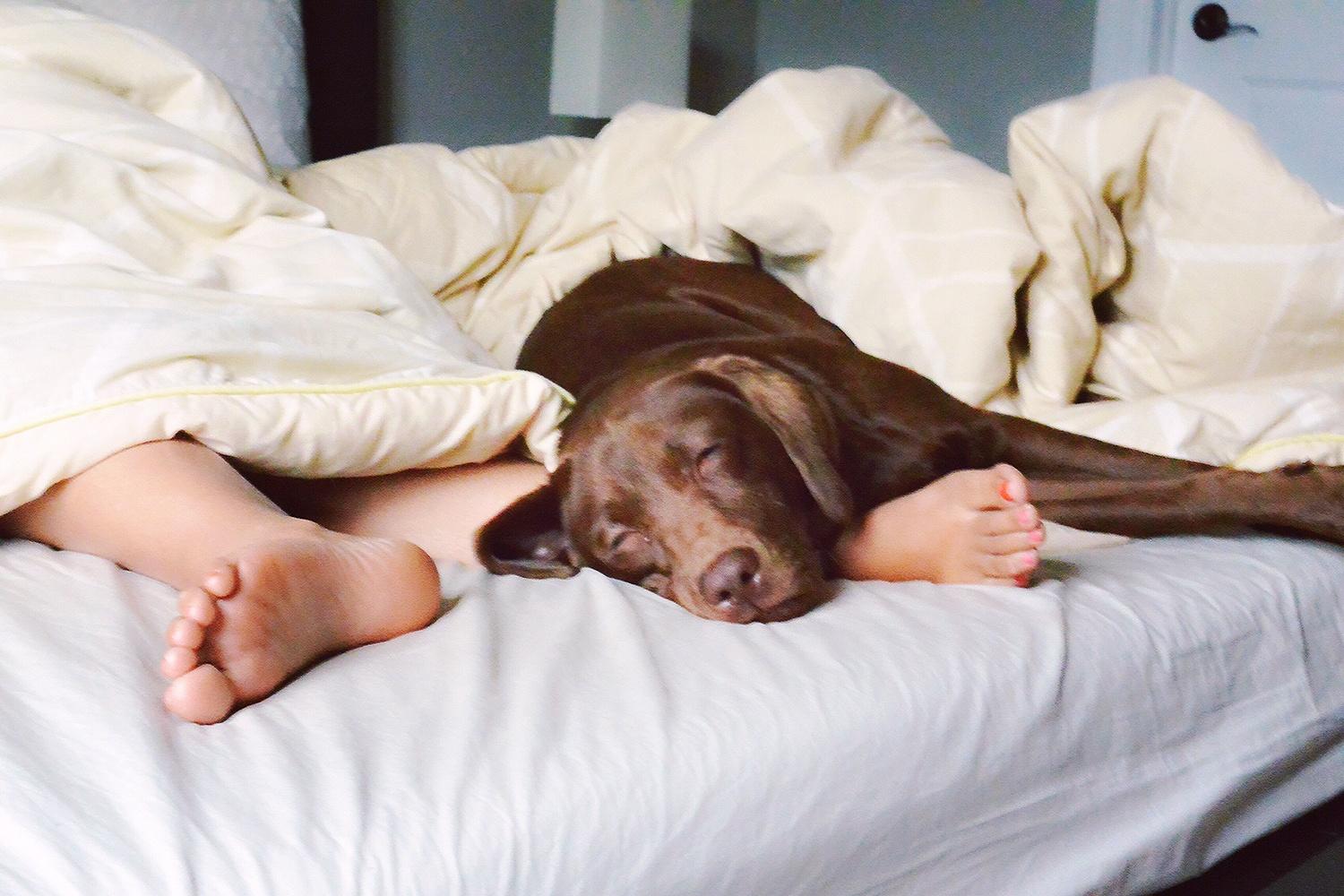When it comes to sharing a bed with our four-legged friends, the decision can often feel like a tug-of-war between comfort and caution. For many pet owners, the allure of snuggling up with their dog at night is hard to resist; after all, who doesn’t love the warmth and companionship that comes from having a furry pal by their side? However, this cozy arrangement also raises important questions about health, behavior, and boundaries.
In this article, we’ll explore the pros and cons of letting your dog sleep in bed with you, helping you make an informed decision that suits both you and your canine companion. Whether you’re dreaming of delightful snuggles or weighing the potential downsides, we’ve got you covered with all the insights you need!
Table of Contents
- Benefits of Sharing Your Bed with Your Dog
- Potential Drawbacks of Co-Sleeping with Your Canine Companion
- Tips for Creating a Comfortable Sleeping Environment for Both
- How to Establish Boundaries and Promote Healthy Sleep Habits
- Q&A
- The Way Forward
Benefits of Sharing Your Bed with Your Dog
Sharing your bed with your furry friend can cultivate a deeper bond between you and your dog. This close proximity can enhance your pet’s sense of security and comfort, resulting in a calmer and happier dog. The warmth of your body and the rhythmic sound of your breathing can soothe your canine companion, making them feel safe throughout the night. Additionally, this arrangement can help reduce anxiety in pets, especially those prone to separation issues. The emotional benefits are not one-sided; many dog owners report feeling more relaxed and content with their pets snuggled close by, which can improve their overall well-being.
Moreover, co-sleeping with your dog can lead to improved sleep patterns for both parties. The presence of your dog can create a sense of companionship that can make falling asleep easier, especially for those who struggle with insomnia or anxiety. A study revealed that 72% of pet owners feel more secure and comforted with their pets next to them at night. Here are a few advantages to consider:
Increased Security: Dogs often act as natural alarms, alerting you to any strange noises or potential dangers.
Stress Relief: Petting your dog as you wind down can release oxytocin, promoting feelings of happiness and relaxation.
Improved Bonding: Sharing your space encourages a deeper emotional connection between you and your dog.
Potential Drawbacks of Co-Sleeping with Your Canine Companion
While co-sleeping with your canine companion can provide comfort and strengthen your bond, there are some potential drawbacks to consider. For starters, sleep quality may be compromised if your dog has a habit of moving around during the night. Frequent shifts in position or barking can disrupt your rest, leading to fatigue. Additionally, if your dog tends to snore, it might create an uncomfortable sleeping environment for both of you. This can be especially problematic if you share your bed with a partner who may not appreciate the nighttime disturbances.
Moreover, sharing your bed raises hygiene concerns, as dogs can carry dirt, hair, and parasites. Regular grooming and bathing may help, but the risk of allergens or irritation can increase when your fur friend sleeps in such close quarters. If you or someone in your household has allergies, this could be a significant drawback. Lastly, allowing your dog to sleep in your bed might blur the lines of behavior boundaries. It can lead to them believing they have the same status as you, which may create challenges in training and discipline.
Tips for Creating a Comfortable Sleeping Environment for Both
Creating a cozy sleeping environment is essential for both you and your furry friend. Start by ensuring the bed is spacious enough for both of you. If your dog is large, consider a king-sized bed or a designated spot on the bed with their own blanket. You can also invest in a dog-friendly mattress topper that will provide comfort for your pet while ensuring you have the support you need. The temperature of the room is equally important; keep it cool to help both of you sleep soundly, as dogs can overheat easily.
Lighting and noise levels play a significant role in creating a peaceful space. Aim for a dark and quiet room by using blackout curtains and white noise machines if necessary. Try to establish a consistent nighttime routine that signals to your dog that it’s time to wind down. You might also want to set up a comfortable resting area nearby in case your dog prefers to sleep alone some nights. Here’s a quick checklist to help you set up the perfect sleeping environment:
Choose the right-sized bed
Maintain a comfortable temperature
Use blackout curtains
Consider a white noise machine
Establish a nightly routine
How to Establish Boundaries and Promote Healthy Sleep Habits
Establishing boundaries when it comes to sharing your sleeping space with your dog is essential for both your comfort and their well-being. Start by defining a designated sleeping area for your pet, which can serve as a cozy sleeping zone that still allows them to feel included. Utilize positive reinforcement techniques to encourage your dog to rest in its own space. This could include:
Comfortable bedding: Provide a soft, inviting bed that encourages your dog to settle in.
Rewarding calm behavior: Use treats or praise when your dog chooses to lie down in its designated spot.
Gradual transition: Start with short periods of separation and slowly increase the time spent apart.
To promote healthy sleep habits for both you and your furry friend, create a consistent bedtime routine. Dogs thrive on routine, so try to establish a set time for bedtime that allows for winding down. Consider the following strategies to enhance this experience:
Evening walks: Take your dog for a walk before bed to help them release excess energy.
Calming environment: Dim the lights and minimize noise to signal that it’s time to sleep.
Regular schedule: Aim for consistent waking and sleeping times to regulate sleep patterns.
Here’s a simple table to illustrate an effective bedtime routine:
| Time | Activity |
|---|---|
| 9:00 PM | Evening walk |
| 9:30 PM | Calm playtime or cuddles |
| 10:00 PM | Settling in for the night |
Q&A
Q1: What are the benefits of letting my dog sleep in bed with me?
A1: There are several benefits to sharing your bed with your furry friend! Many dog owners find that having their dog close by promotes feelings of companionship and security. It can also help reduce anxiety for both owner and pet, creating a calming environment. Additionally, cuddling with your dog can increase the bond you share, leading to a more trusting relationship. Lastly, the warmth your dog provides can be quite comforting during colder nights!
Q2: Are there any potential downsides to letting my dog sleep in my bed?
A2: Yes, there are a few downsides to consider. For some people, sharing a bed with a dog can disrupt sleep due to movement, snoring, or even a dog taking up too much space. Additionally, if your dog is not well-trained or has a tendency to jump off and on the bed, it can lead to disturbances during the night. There may also be concerns about hygiene, especially if your dog spends time outdoors or sheds fur. Lastly, some experts warn that allowing your dog in the bed may reinforce dominant behaviors in certain breeds.
Q3: How can I determine if my dog is a good candidate for sleeping in my bed?
A3: To assess if your dog is a good candidate for bed-sharing, consider their behavior and temperament. Does your dog display signs of anxiety or restlessness during the night? Are they well-trained and comfortable with commands? If your dog is calm, and you have a trusting relationship, they may be a good fit for sharing your bed. Also, consider your own sleeping habits—if you’re a light sleeper, you may want to think twice.
Q4: Are there specific breeds that are more suited to sleeping in bed with their owners?
A4: While any dog can potentially be a good sleeping companion, certain breeds, particularly those known for their affectionate nature, tend to do well. Breeds like Labs, Golden Retrievers, and Cavalier King Charles Spaniels are often known for their cuddly behavior. However, each dog has its own personality, and individual behavior is more important than breed alone!
Q5: How can I manage the transition if I decide to let my dog sleep in my bed?
A5: If you decide to make the transition, it’s best to do it gradually. Start by allowing your dog to sleep close to your bed on a dog bed or blanket. Once they’re comfortable, you can invite them up on the bed at night. It’s essential to set boundaries, such as having them sleep at the foot of the bed instead of directly on your pillow. Consistency is key, so reinforce the behavior you want with positive reinforcement, like treats or praise.
Q6: What if my dog is not allowed on the bed, but I want them close by at night?
A6: If you prefer not to let your dog on the bed but still want them nearby, consider placing a comfortable dog bed or mat close to your own. This way, they can feel secure by being close to you while respecting your sleeping space. You can also encourage them to settle in their own space by rewarding them with treats when they choose to sleep there.
Q7: Can I change my mind later about having my dog sleep in my bed?
A7: Absolutely! It’s perfectly fine to change your approach as needed. If you initially let your dog sleep in your bed but later find it’s not working for you, gently transitioning them back to their own bed is often simple. Just be consistent with your new rules and provide plenty of encouragement. Dogs are adaptable and will usually understand with a little time and patience.
In conclusion: Whether or not you decide to let your dog sleep in bed with you is a personal choice. Consider the pros and cons, assess your dog’s behavior, and think about your own sleep habits to make the best decision for both you and your furry friend!
The Way Forward
the decision to let your dog sleep in bed with you ultimately depends on your personal preferences, your dog’s behavior, and your living situation. While there are undeniable benefits, such as enhanced bonding and a sense of security, it’s essential to weigh these against potential drawbacks like sleep disruptions and hygiene considerations. By approaching this decision thoughtfully and considering both the pros and cons, you can create a sleeping arrangement that supports your well-being and your furry friend’s comfort. Remember, every dog and owner dynamic is unique, so trust your instincts and choose what feels right for both you and your pup. Happy dreaming!















